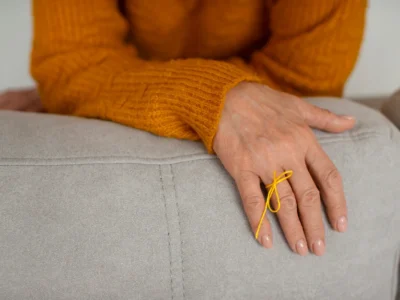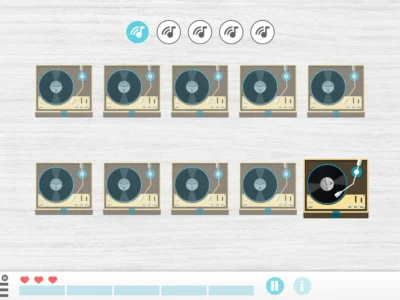In this post, psychologist Cristian Francisco Liébanas Vega talks to us about the intraoperative brain mapping technique and its contributions to disease diagnosis.
The intraoperative brain mapping technique is a specialized method used during brain surgery to optimize the balance between tumor removal and the preservation of important brain functions. This technique is mainly used in patients with tumors or lesions located near functionally important brain regions such as language, movement, vision, and emotions. The main goal of intraoperative brain mapping is to identify and avoid critical brain areas during tumor removal.
How is the brain mapping study performed?
The intraoperative brain mapping study is carried out using electrodes to stimulate different parts of the brain while the patient is awake. During the procedure, different language, movement, visual field and emotion expression tasks are performed, designed specifically for each patient by neuropsychologists.
These tasks allow neurosurgeons and clinical neuropsychologists to evaluate the patient’s responses and create a personalized map of the brain areas with functions to be preserved. This functional map is compared with the anatomical map of the tumor obtained by intraoperative ultrasound and neuronavigation, which provides better knowledge of the functioning of higher brain functions and allows for more extensive surgical resections with a lower risk of neurological damage.
Diseases detectable by brain mapping
In addition to brain tumors, brain mapping can also be used in the diagnosis and treatment of other neurological diseases, such as epilepsy and movement disorders. Intraoperative brain mapping can provide crucial information about the brain areas responsible for seizures in patients with epilepsy, enabling the planning of precise surgical removal of the affected area.
The role of the neuropsychologist in brain mapping
The neuropsychologist plays a fundamental role in the intraoperative brain mapping study. They are responsible for designing and carrying out the specific neuropsychological tasks to assess the patient’s brain functions during the procedure.
The neuropsychologist works closely with the surgeon and the medical team to identify critical brain areas and create a personalized map of the functions that must be preserved during surgery. In addition, the neuropsychologist may also conduct pre- and postoperative assessments to evaluate possible changes in brain functions after surgery.
Contributions of brain mapping to disease diagnosis
Intraoperative brain mapping has proven to be a valuable tool in the diagnosis of neurological diseases.
Besides serving to determine the anatomical and functional boundary of tumors as we have just seen, brain mapping can also be used in the diagnosis and treatment of other neurological diseases such as, in the case of epilepsy, helping to determine the areas responsible for seizures and guiding the planning of surgery to remove the affected areas.
Clinical psychological and neuropsychological assessment
In patients who are candidates for neurosurgery with the patient awake, identifying changes in mood, cognition, behavior and personality is a challenge and only an exhaustive and very complete assessment process can determine whether they are caused by the tumor or are a psychological response secondary to stress, the diagnosis or the treatment (Madhusoodanan, Ting,Farah, & Ugur, 2015). In this regard, the literature emphasizes careful and individualized patient selection through a thorough and objective preoperative neuropsychological assessment, in which risks can be reduced and the chances of a good diagnosis increased.
Neuropsychological predictors of high surgical risk
1. Personal factors
It is important to take into consideration all those personal factors that may influence the person’s surgical performance positively or negatively. Personal resources include personality type, emotional maturity, coping strategies and previous experiences. The existence of previous experiences related to cancer or the death of a family member due to a tumor are associated with a greater emotional burden for the patient at the start of the process, while the existence of social and family resources are considered protective factors in the course of the disease.
Variables such as excessive alcohol or drug consumption and chronic pain disorders are known risk factors for sedation failure (Chui, 2015). In addition, stress level, patient expectations and the way they face frightening situations are taken into account in various studies and are considered important variables.
2. Decision-making capacity
Assessment of the capacity to understand the treatment is a necessary part of the care process. According to Palmer & Harmell (2016) and Lutters & Broekman (2019) the formal assessment of decision-making capacity is not only an ethical and legal obligation of the team in charge, but also constitutes a right to the patient’s autonomy. Palmer & Harmell (2016) state that the patient’s decision-making capacity should be defined based on four dimensions:
- Understanding: refers to the ability to accept and comprehend the illness, the information provided, the risks, benefits and possible treatments.
- Appreciation: described as the ability to apply the information provided to oneself and one’s own situation.
- Reasoning: refers to evidence that decisions reflect the presence of a comparative process and manipulation of information.
- Expression of the decision: understood as the ability to communicate a clear and consistent decision.
At this point, it should be taken into account that, in the course of the disease, the capacity to choose becomes more complex, so it is common for both the patient and the family to have difficulties deciding about their own health (Mattavelli, Casarotti, Forgiarini, Riva, Bello, & Papagno, 2012). In addition, patients with brain tumors often present cognitive impairment, which in some cases is related to severe impairments in everyday decision-making abilities (Ouerchefani, Ouerchefani, Allain, Rejeb, & Le Gall, 2017, Lutters & Broekman, 2019).
As a consequence of the disease itself, many patients only have limited awareness of their symptoms and tend to underestimate the impact on their lives. Lack of self-awareness, which is a consequence of the tumor itself or of some psychological defense mechanism, brings with it difficulties for making informed decisions regarding their health status, which has been pointed out as a limitation for patient participation in this type of procedure (Boele et al., 2015).

Subscribe
to our
Newsletter
3. Emotional and psychiatric disturbances
According to the literature, a highly anxious patient will tend to make more mistakes and will lose levels of attention-concentration and memory, so neither baseline nor real-time results would be reliable and would affect both the action plan and the delineation of the resection (Ruis et al., 2017 and Huget et al, 2019). In awake neurosurgery, it is very important that the patient has management of anxiety and of their own movements, which guarantees that they have self-restraint skills. Self-restraint is understood as the patient’s ability to voluntarily regulate their behavior during the procedure (Rughani, Rintel, Desai, Cushing & Florman, 2011; Howie at al., 2016).
4. Neurocognitive disorders
Neuropsychological assessment is a primary procedure that not only allows creating a baseline of cognitive functioning, but also identifying major neuropsychological deficits that incapacitate the patient from performing the tasks required during brain mapping (Ruis, Wajer, Robe, & van Zandvoort, 2014).
According to Hervey-Jumper & Berger (2016) severe impairment in preoperative cognitive functioning, the presence of aphasias, pronounced neurological disorders and the inability to be examined due to attention and consciousness problems are considered exclusion factors, as they hinder the patient’s cooperation in the operating room.
On the other hand, Becker (2016) mentions some basic cognitive functions that the person must retain to take an active role during awake neurosurgery :
- a sufficiently fluent language to express themselves and be able to communicate cognitive and physical changes and discomfort during the process;
- verbal comprehension for cooperation and following instructions;
- memory to ensure storage of information and instructions to follow regarding the surgery;
- attention for carrying out intraoperative activities;
- and visual skills in case they must name images.
5. Considerations for pre-surgical preparation
In addition to passing the clinical psychological and neuropsychological assessment filters, it is necessary for the patient to meet the evaluation requirements proper to pre-surgical preparation to comply with the demands of the surgery (Rughani et al., 2011). The experience developed at HM has allowed the team to identify that such preparation must involve the family or social network and must contain the two basic aspects that will be developed below:
A. Information regarding the surgery
This type of surgery demands the coordinated participation of each team member. The patient, by integrating as an active agent, must know in detail their roles, the procedures to be carried out during the surgery and what to expect at each step. In addition, beyond knowing such information, they must understand it.
Authors such as Beez et al. (2013) and Ruis et al. (2014) believe that, if the patient shows reluctance or denial to obtain details about the surgery, they cannot be operated on under this modality, since the patient must know the advantages and the need to remain awake at the key moments of the operation.
However, in clinical practice it is identified that the way information is provided must match the patient’s coping style, and some patients require more details than others.
What will happen in the operating room should be explained, including the procedure, possible complications, the desired level of cooperation and the tasks to be performed (Carbone et al., 2019). For this, psychoeducation and preparation sessions with both the patient and the family are fundamental to achieve this objective.
Psychological preparation for surgery also requires sensory familiarization with the operating room environment and with the sensations in one’s body. A prior visit to the operating room or the presentation of visual and auditory stimuli that accustom the person to the procedure, the physical space and the instruments, are a good tool and help demystify erroneous beliefs the patient may have about the procedure (Ortega, 2013; Ortiz, 2014; Quesada, 2015; Molinari, 2015; Acuña, 2017). Being able to anticipate in some way what will happen or be felt will give them a sense of control during the procedure.
B. Bond with the neuropsychology professional and the surgical team
One of the most relevant aspects that distinguishes awake surgery from other types of surgery is the importance of the patient being able to create a bond of trust with the neuropsychologist.
Due to the demanding nature of the procedure, studies have shown that patients need to have a familiar person available to provide emotional support throughout the entire surgical procedure (Ruis et al., 2014).
Actions such as explaining before and during the surgery what is happening, training them for moments of discomfort or anxiety, offering words of encouragement and holding their hand during the surgery are perceived as highly valuable by patients (Molinari, 2015; Acuña, 2017; Ruis et al., 2014).
For this type of interaction between the patient and the clinician to be possible, it is necessary to invest time in preparation and have the patient’s willingness to work together (Ruis et al., 2014). As part of the preparation, the neuropsychology professional can attempt to generalize the bond of trust to the entire surgical team, which would be the ideal situation in the operating room.
Bibliography
- Duffau, H. (2017). Mapping the connectome in awake surgery for gliomas: an update. Journal of neurosurgical sciences, 61(6), 612-630.
- Feigl, G. C., Luerding, R., & Milian, M. (2015). Awake Craniotomies: Burden or Benefit for the Patient? In Handbook of Neuroethics (pp. 949-962). Springer Netherlands.
- Freyschlag, C. F., & Duffau, H. (2014). Awake brain mapping of cortex and subcortical pathways in brain tumor surgery. Journal of neurosurgical sciences, 58(4), 199-213.
- Howie, E., Bambrough, J., Karabatsou, K., & Fox, J. R. (2016). Patient experiences of awake craniotomy: An Interpretative Phenomenological Analysis. Journal of health psychology, 21(11), 2612-2623.
- Kelm, A., Sollmann, N., Ille, S., Meyer, B., Ringel, F., & Krieg, S. M. (2017). Resection of Gliomas with and without Neuropsychological Support during Awake Craniotomy—Effects on Surgery and Clinical Outcome. Frontiers in Oncology, 7, 176.
- Klimek, M., van der Horst, P. H., Hoeks, S. E., & Stolker, R. J. (2018). Quality and Quantity of Memories in Patients Who Underg Awake Brain Tumor Resection. World neurosurgery, 109, e258-e264.
- Khu, K. J., Doglietto, F., Radovanovic, I., Taleb, F., Mendelsohn, D., Zadeh, G., & Bernstein, M. (2010). Patients’ perceptions of awake and outpatient craniotomy for brain tumor: a qualitative study. Journal of neurosurgery, 112(5), 1056-1060.
- Leal, R. T. M., da Fonseca, C. O., & Landeiro, J. A. (2017). Patients’ perspective on awake craniotomy for brain tumors—single center experience in Brazil. Acta neurochirurgica, 159(4), 725-731.
- Lutters, B., & Broekman, M. L. (2019). Evaluating Awake Craniotomies in Glioma Patients: Meeting the Challenge. In Ethics of Innovation in Neurosurgery (pp. 113-118). Springer, Cham.
- Madhusoodanan, S., Ting, M. B., Farah, T., & Ugur, U. (2015). Psychiatric aspects of brain tumors: A review. World journal of psychiatry, 5(3), 273.
- Mattavelli, G., Casarotti, A., Forgiarini, M., Riva, M., Bello, L., & Papagno, C. (2012). Decision-making abilities in patients with frontal low-grade glioma. Journal of neuro-oncology, 110(1), 59-67.
- Ouerchefani, R., Ouerchefani, N., Allain, P., Rejeb, M. R. B., & Le Gall, D. (2017). Contribution of different regions of the prefrontal cortex and lesion laterality to deficit of decision-making on the Iowa Gambling Task. Brain and cognition, 111, 73-85.
- Palese, A., Skrap, M., Fachin, M., Visioli, S. y Zannini, L. (2008). The experience of patients subjected to awake craniotomy: in the patients’ own words. A qualitative study. Enfermería noncológica, 31 (2), 166-172.
- Palmer, B. W., & Harmell, A. L. (2016). Assessment of healthcare decision making capacity. Archives of Clinical Neuropsychology, 31(6), 530-540.
- Pichierri, A., Bradley, M., & Iyer, V. (2019). Intraoperative Magnetic Resonance Imaging–Guided Glioma Resections in Awake or Asleep Settings and Feasibility in the Context of a Public Health System. World neurosurgery: X, 3, 100022.
- ughani, A. I., Rintel, T., Desai, R., Cushing, D. A., & Florman, J. E. (2011). Development of a safe and pragmatic awake craniotomy program at Maine Medical Center. Journal of neurosurgical anesthesiology, 23(1), 18-24.
- Ruis, C., Wajer, I., Robe, P., & van Zandvoort, M. (2014). Awake craniotomy and coaching. Open Journal of Medical Psychology, 3(5), 382-389.
- Ruis, C., Wajer, I. H., Robe, P., & van Zandvoort, M. (2017). Anxiety in the preoperative phase of awake brain tumor surgery. Clinical Neurology and Neurosurgery, 157, 7-10.
- Salazar Villanea, M., Ortega Araya, L. E., Ortiz Álvarez, J., Esquivel Miranda, M. A., Vindas Montoya, R., & Montero Vega, P. (2016). Quality of life in Costa Rican patients with brain tumors: contributions of neuropsychology. Actualidades en Psicología, 30(121), 49-66.
- Santini, B., Talacchi, A., Casagrande, F., Casartelli, M., Savazzi, S., Procaccio, F., & Gerosa, M. (2012). Eligibility criteria and psychological profiles in patient candidates for awake craniotomy: a pilot study. Journal of neurosurgical anesthesiology, 24(3), 209-216.
- Vitón Martín, R. (2010). Drug addiction and anesthesia. Revista Cubana de Anestesiología y Reanimación, 9(1), 39-47.
- Wrede, K. H., Stieglitz, L. H., Fiferna, A., Karst, M., Gerganov, V. M., Samii, M., … & Lüdemann, W. O. (2011). Patient acceptance of awake craniotomy. Clinical neurology and neurosurgery, 113(10), 880-884
If you liked this article about clinical neuropsychology in the assessment and preparation for awake neurosurgery, you will likely be interested in these NeuronUP articles:
“This article has been translated. Link to the original article in Spanish:”
Neuropsicología clínica en la evaluación y preparación en neurocirugía con paciente despierto







 What is the relationship between ADHD and dyslexia?
What is the relationship between ADHD and dyslexia?
Leave a Reply